RARE! WWII 1943 New Guinea Campaign 8th Photo Reconnaissance Squadron (5th Air Force) Heavily Used Timbulum Combat Aerial Photo Map*
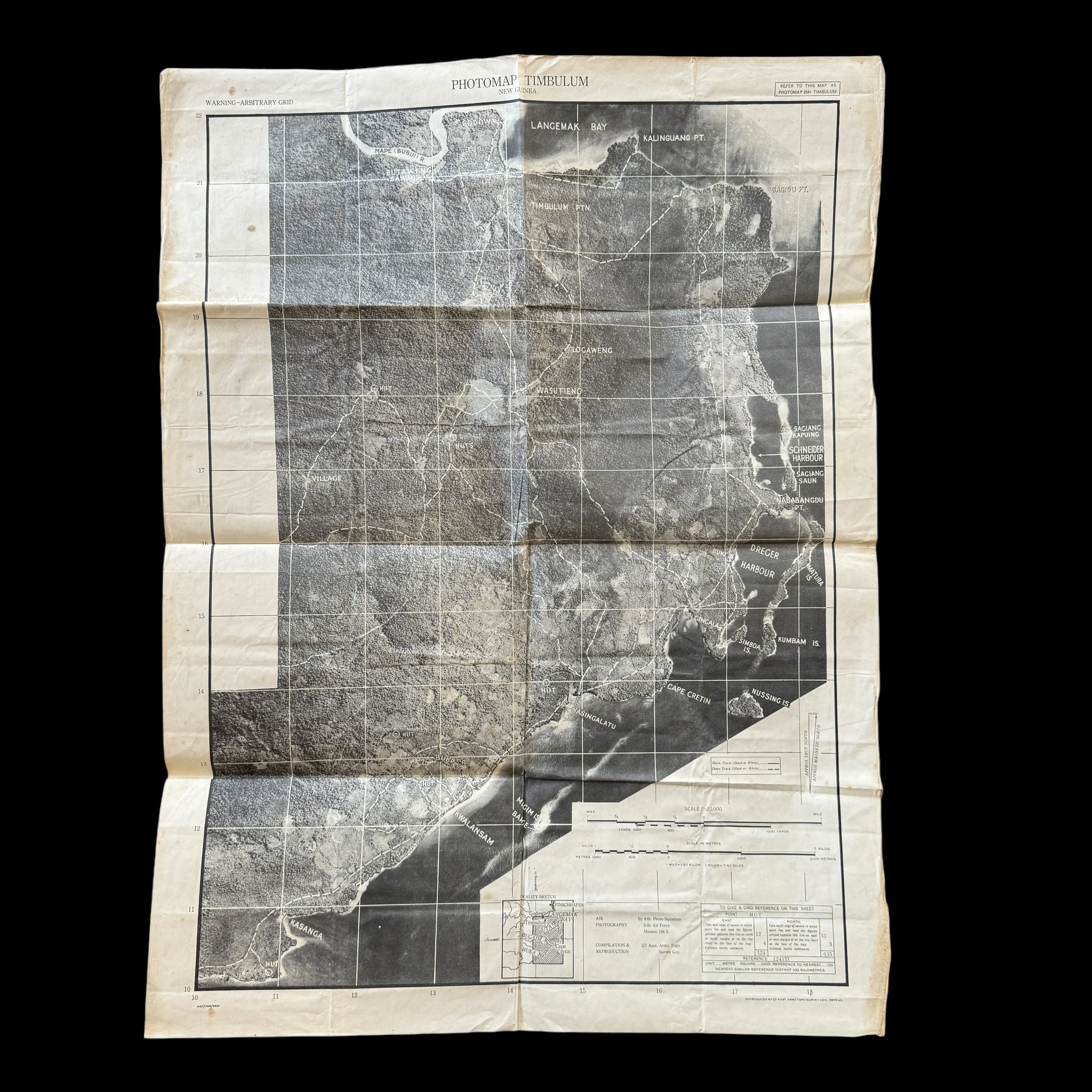
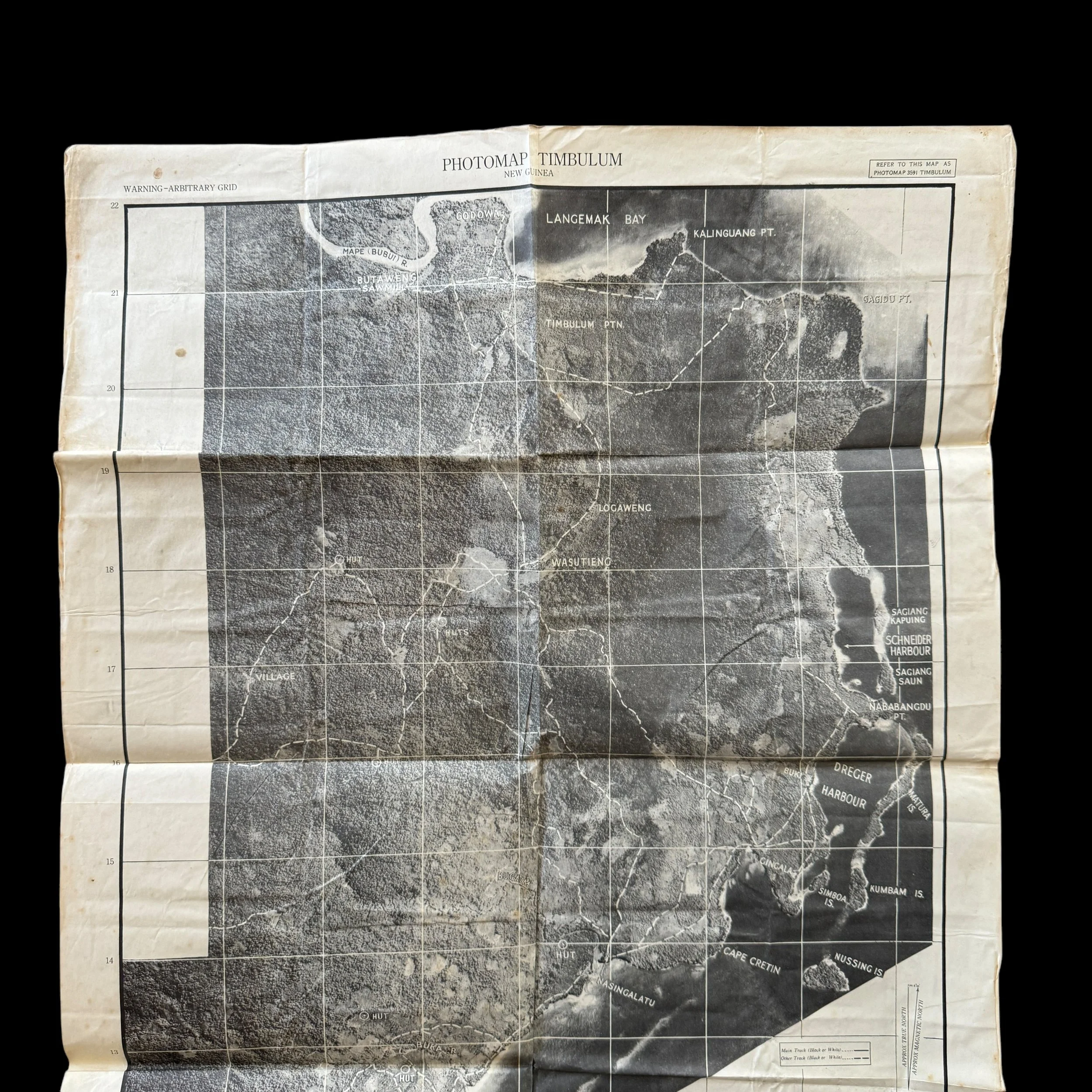
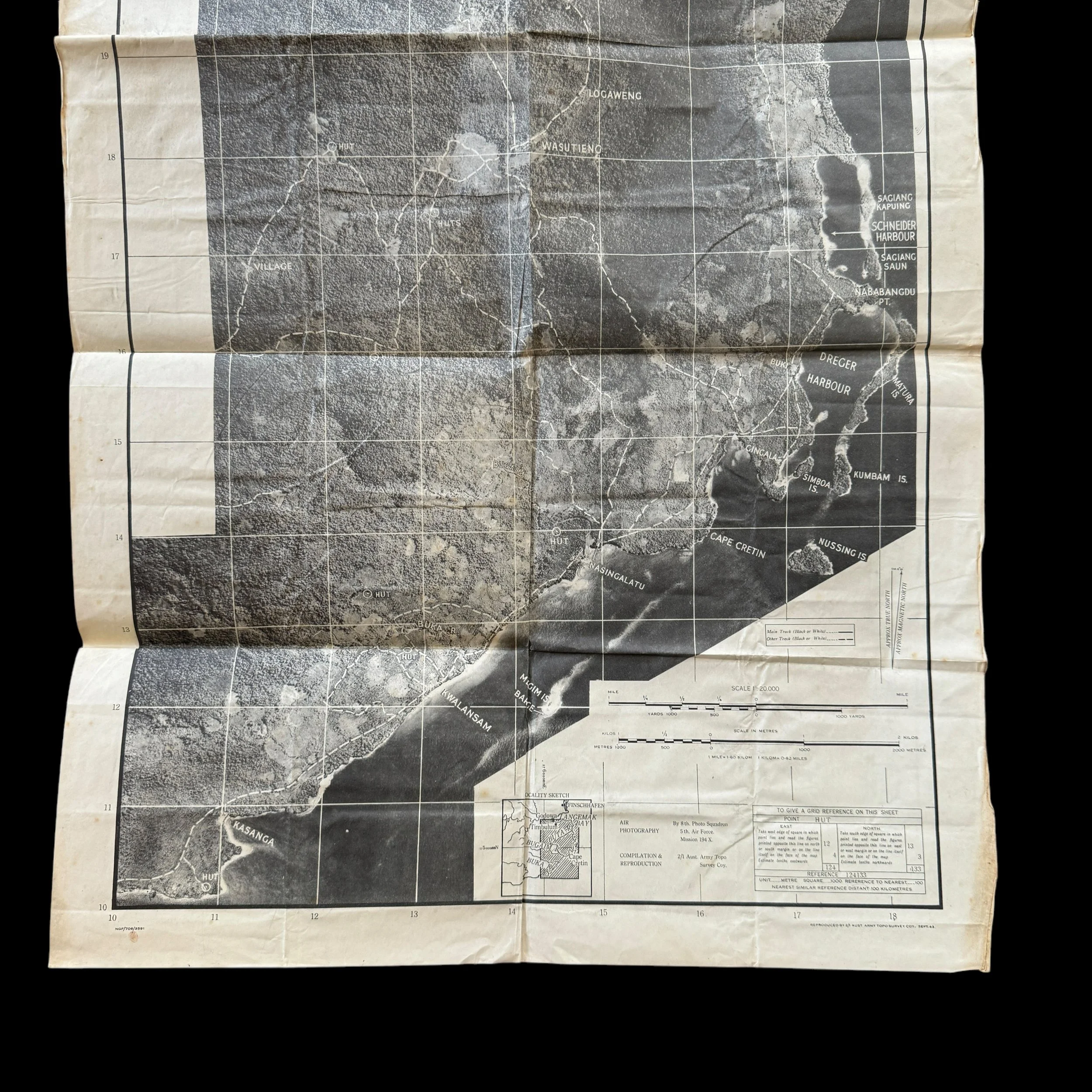
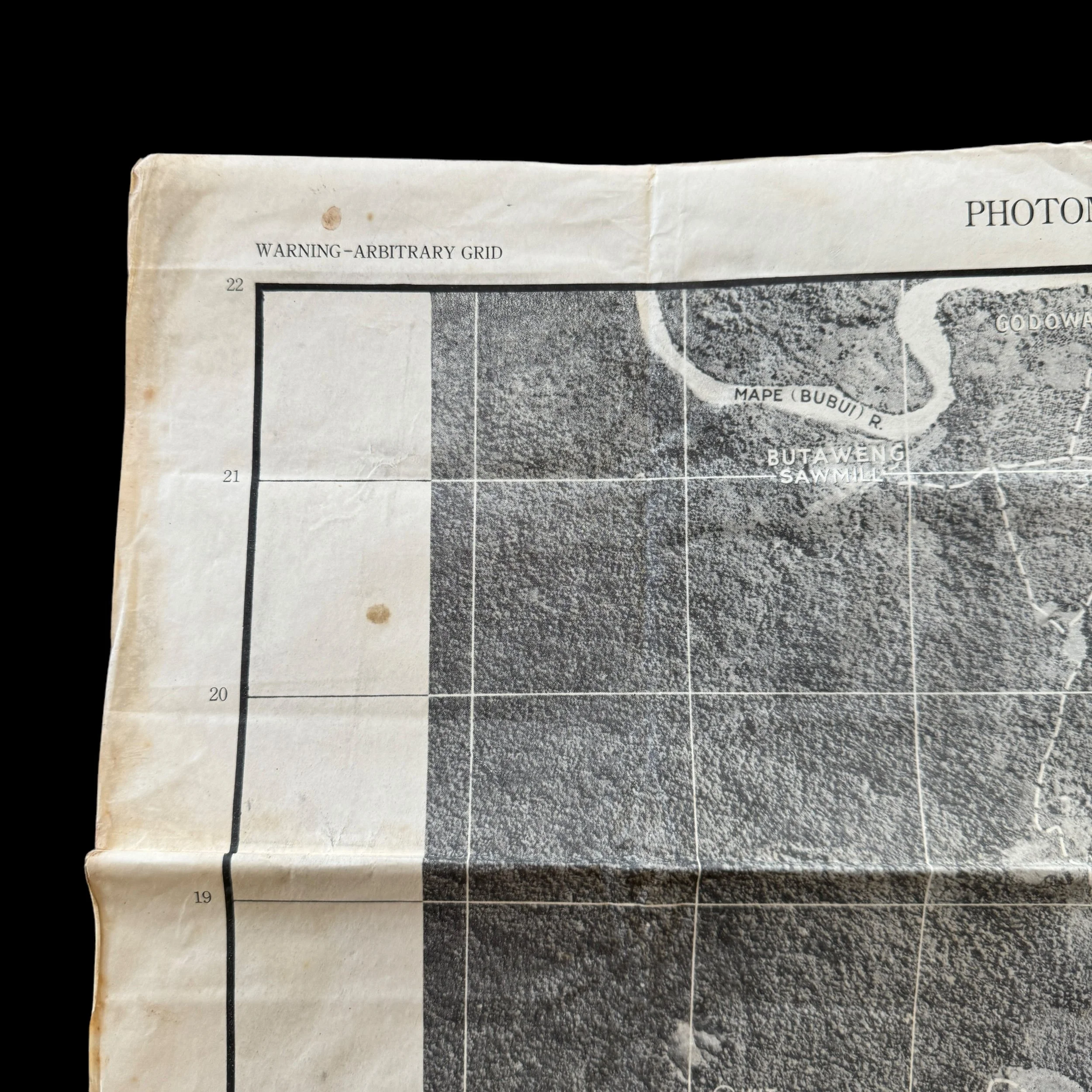
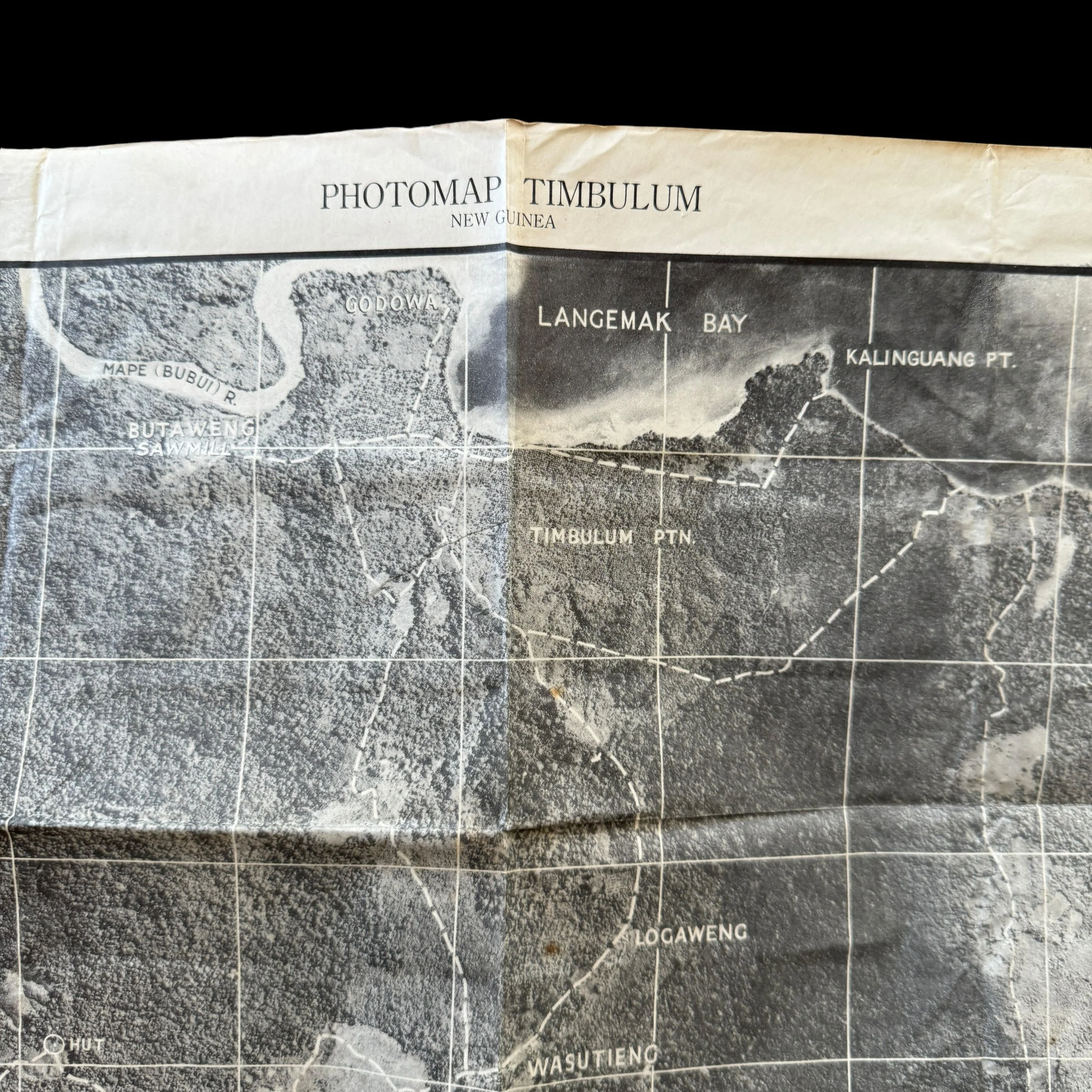
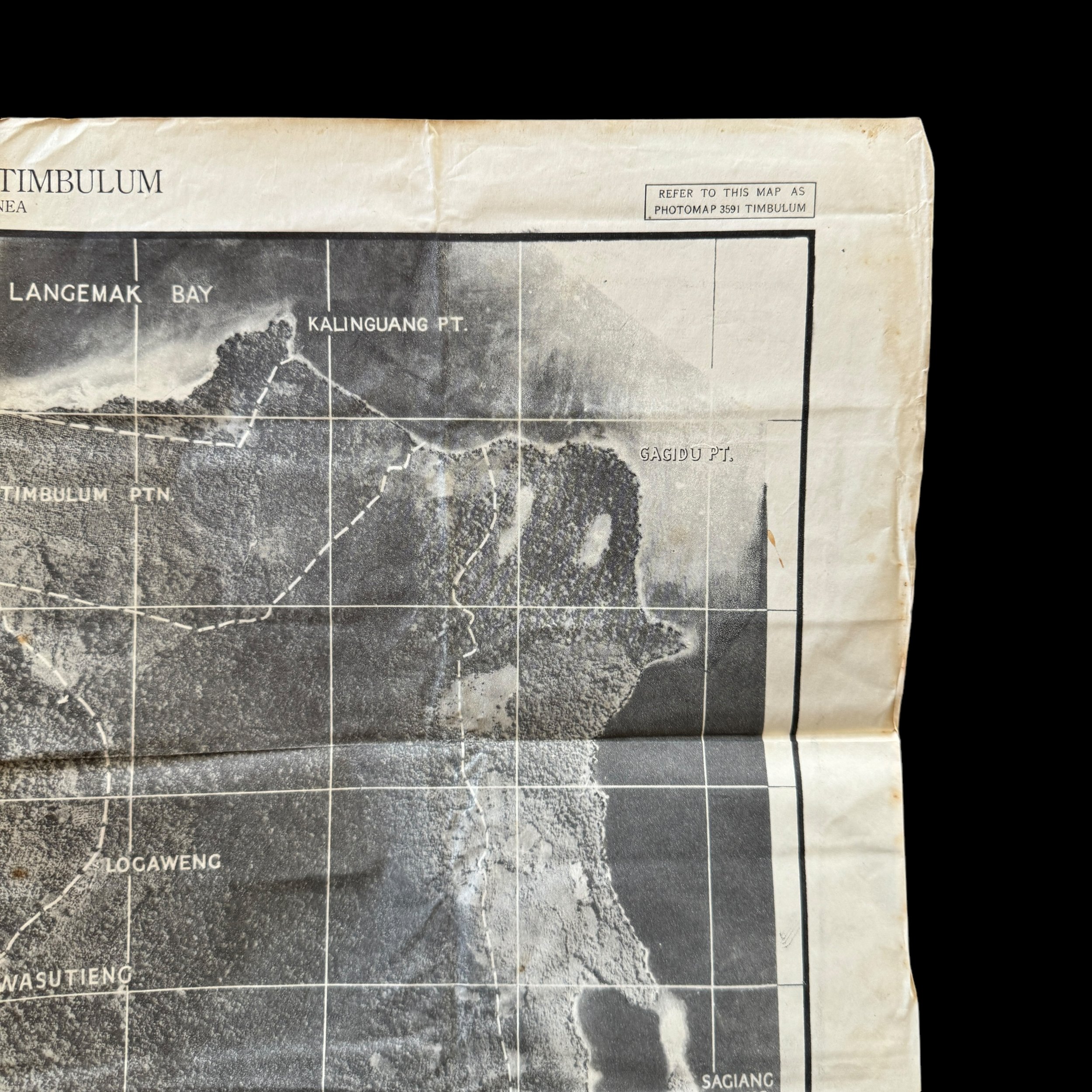
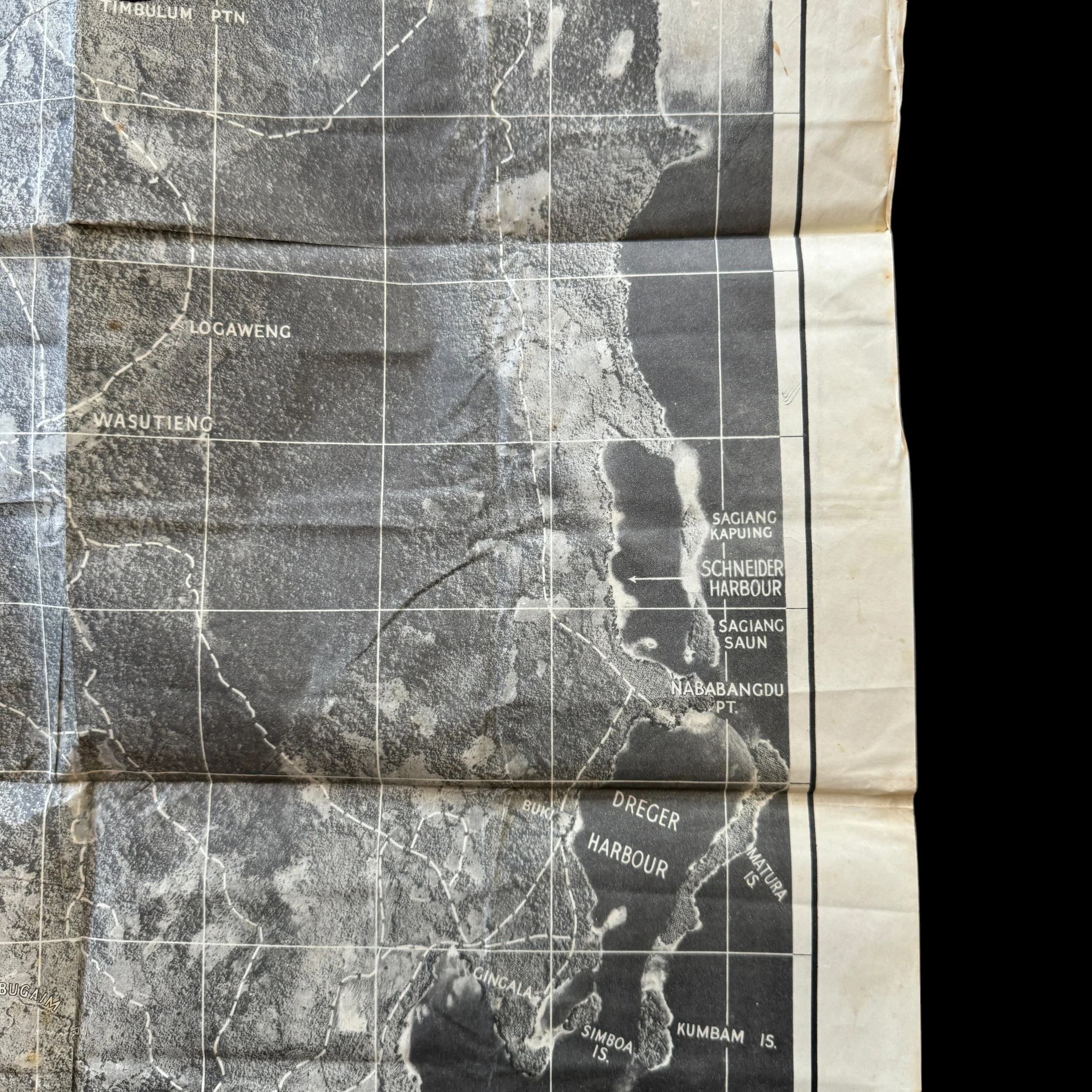
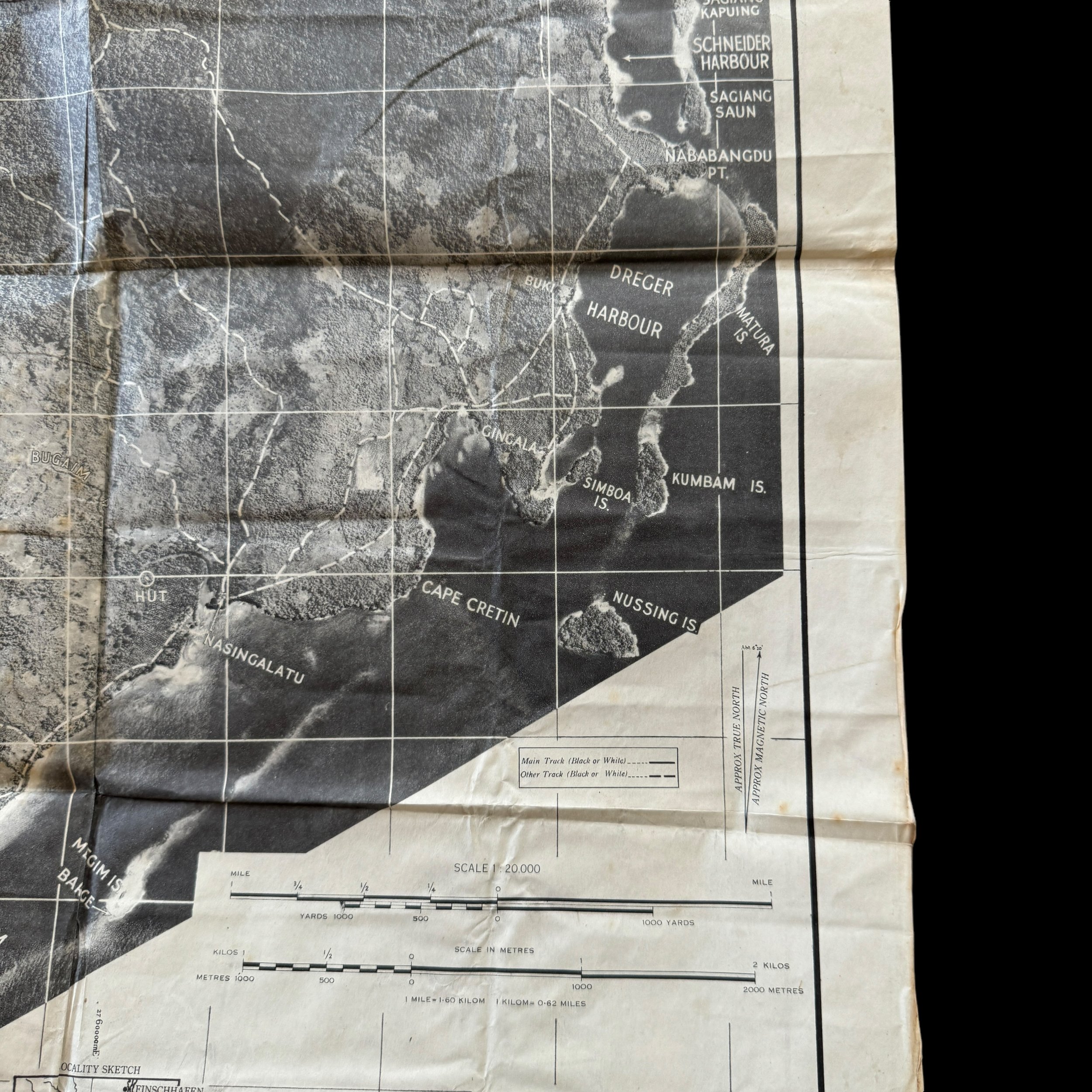
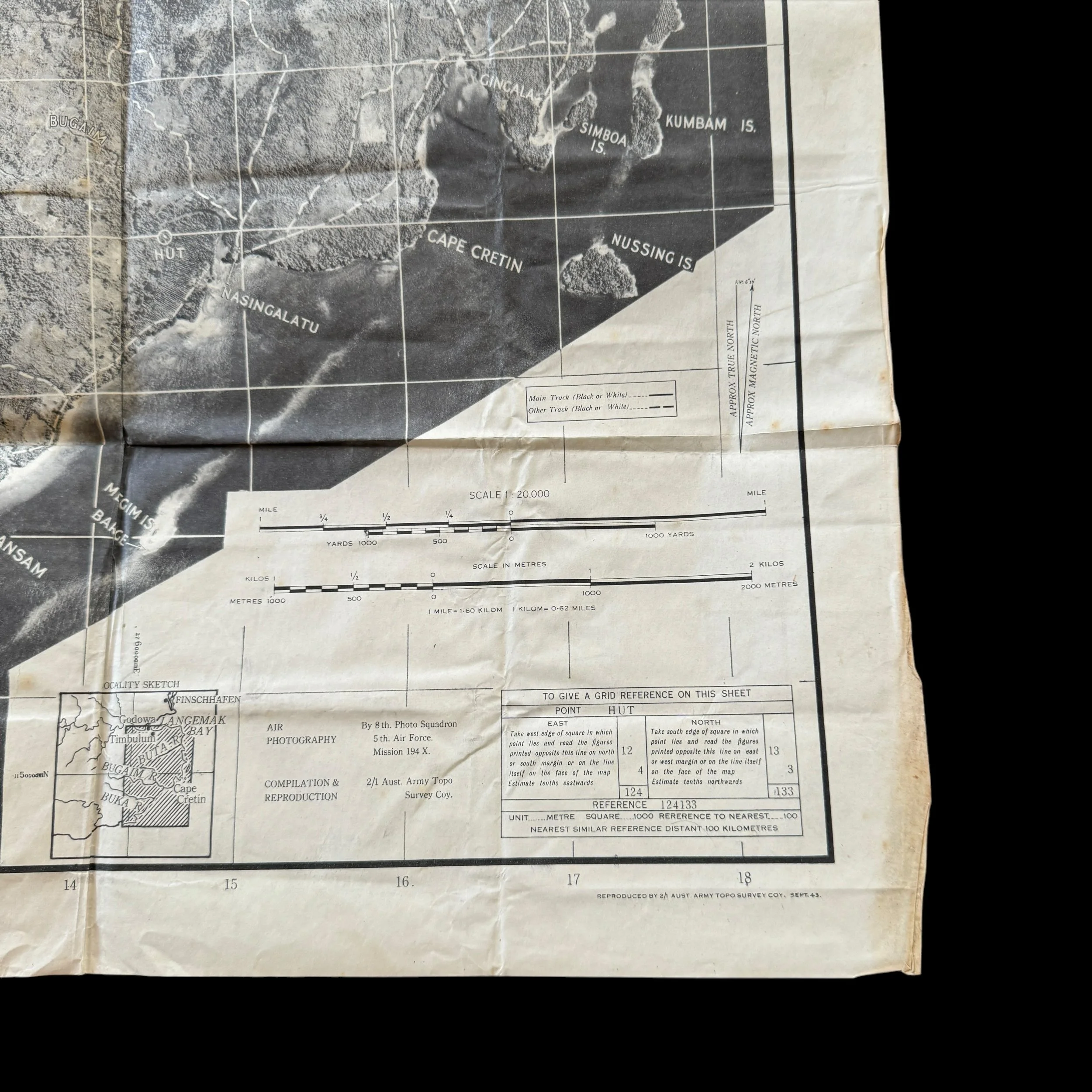
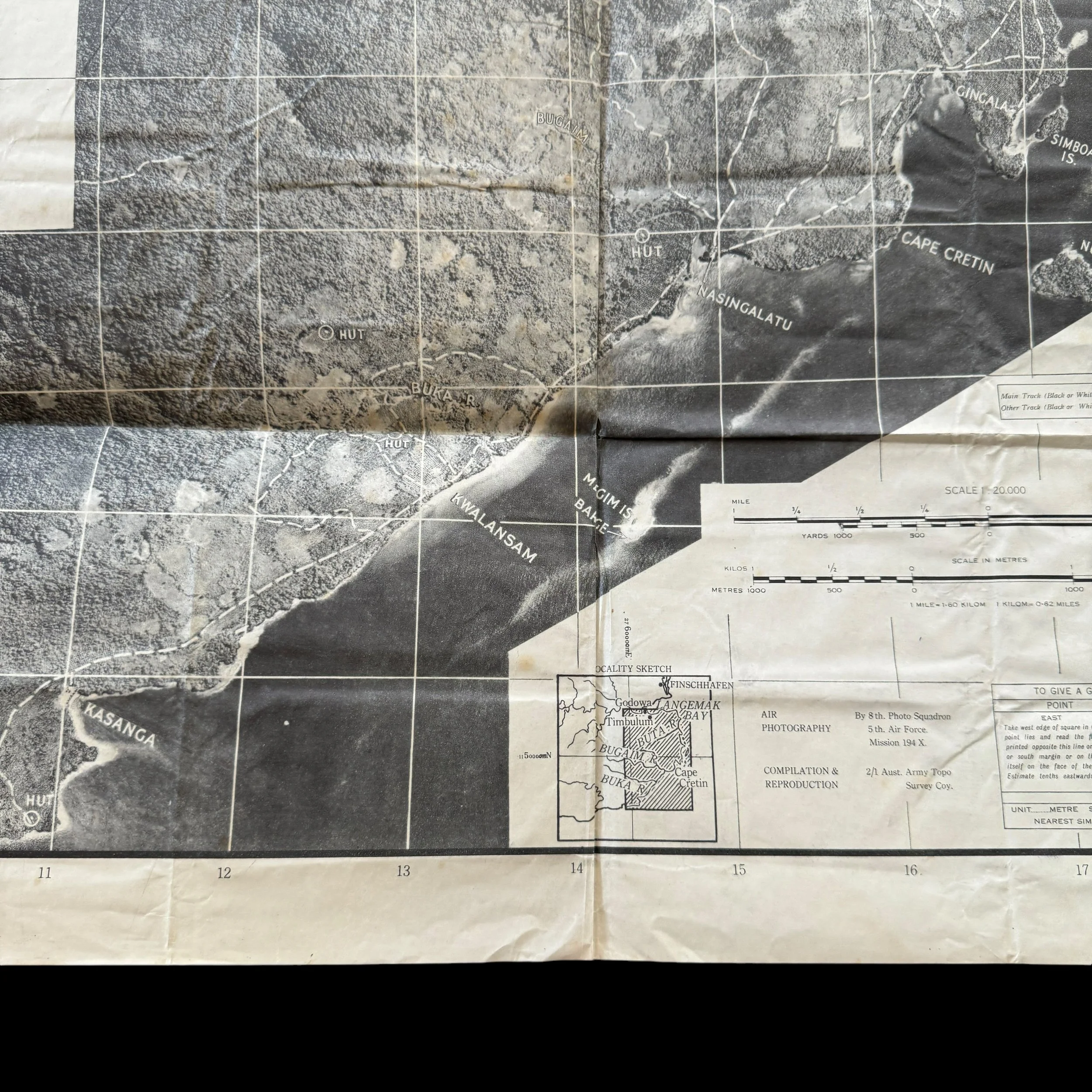

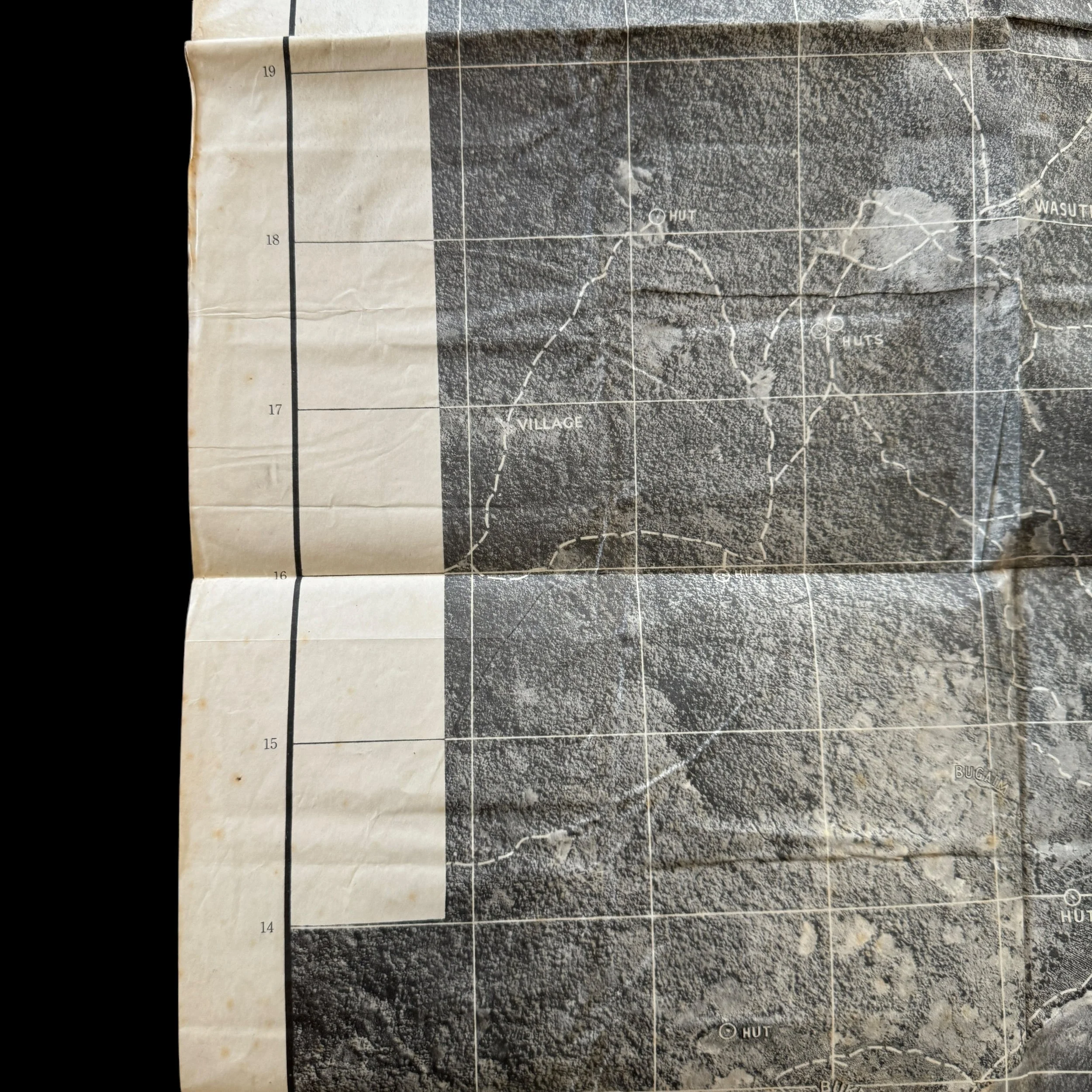
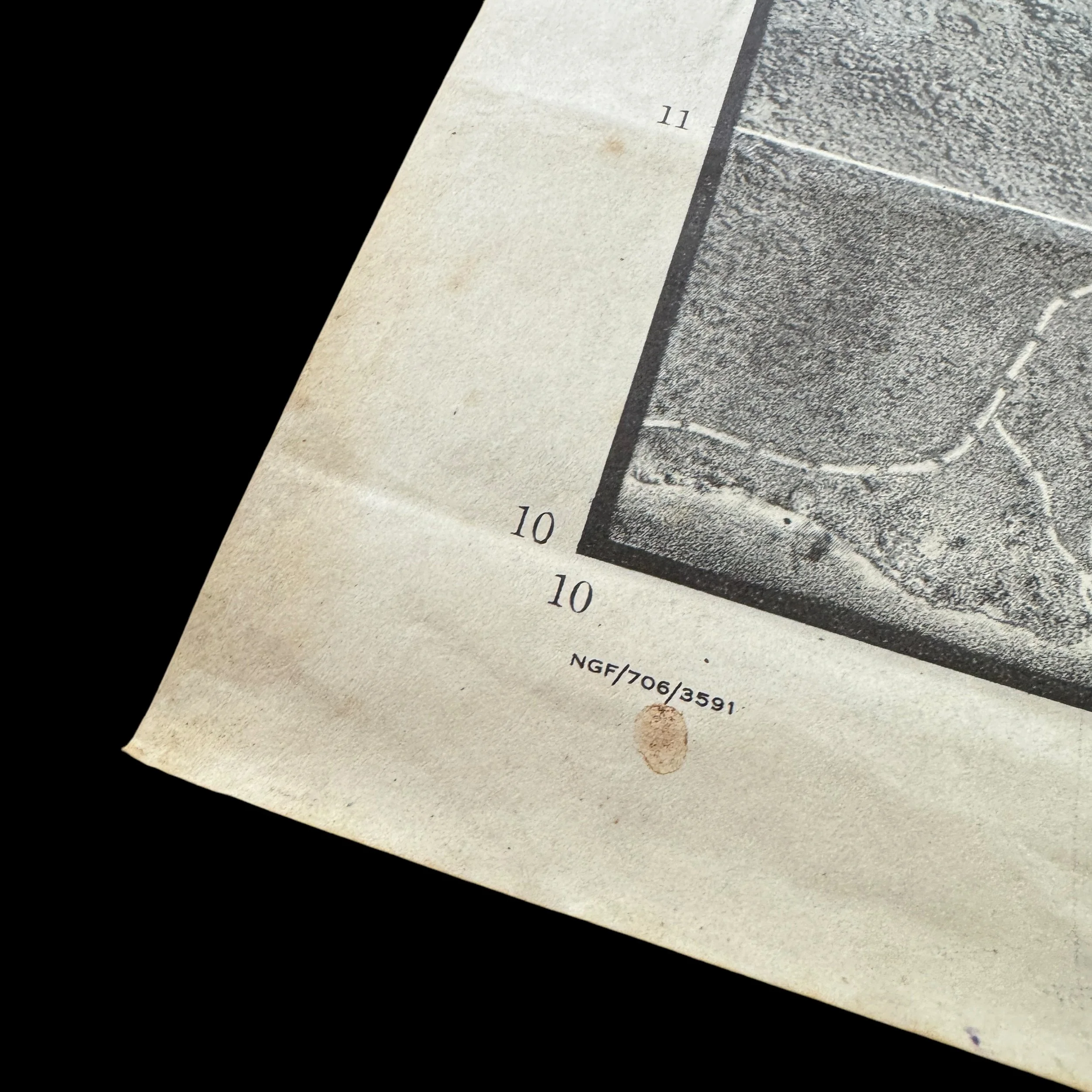


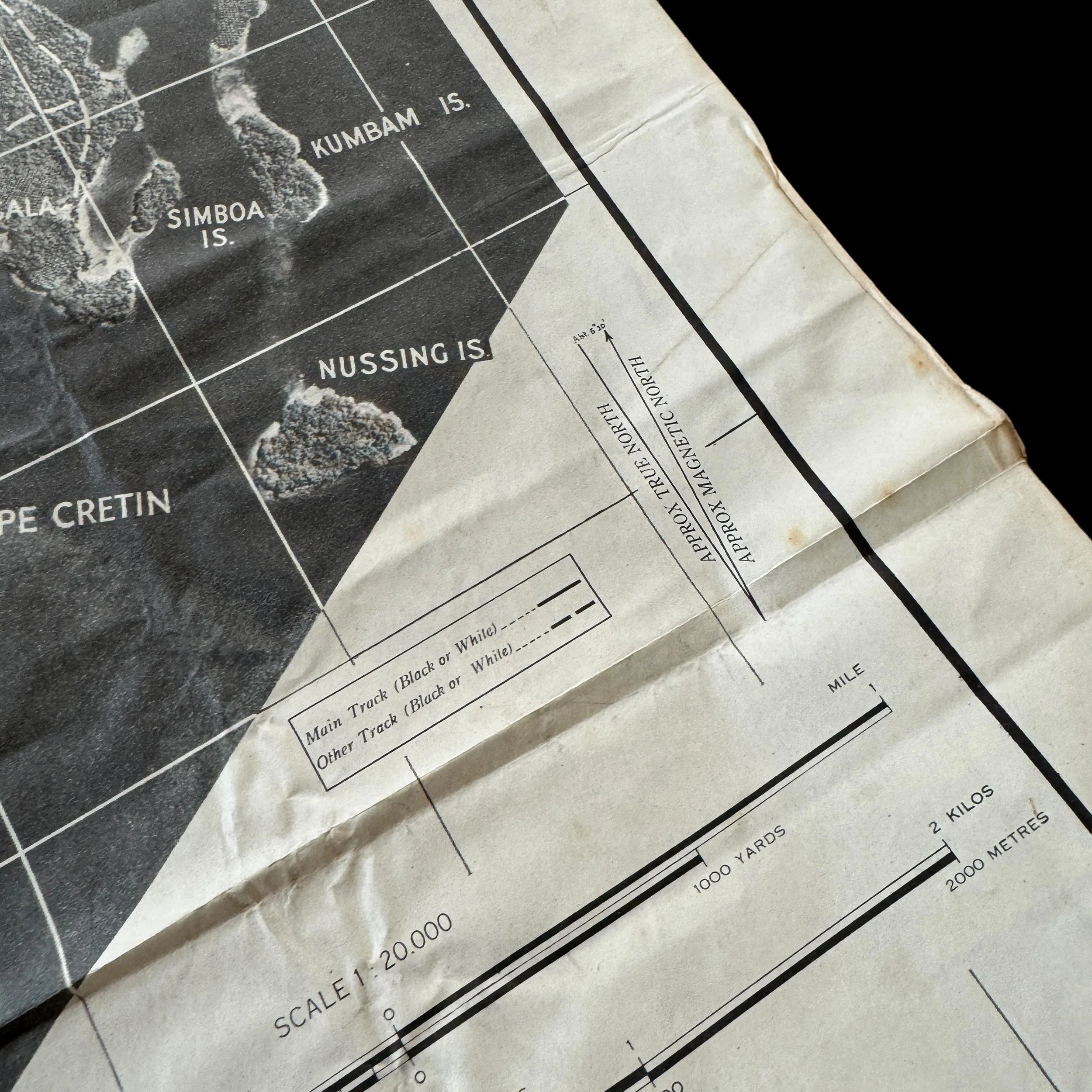
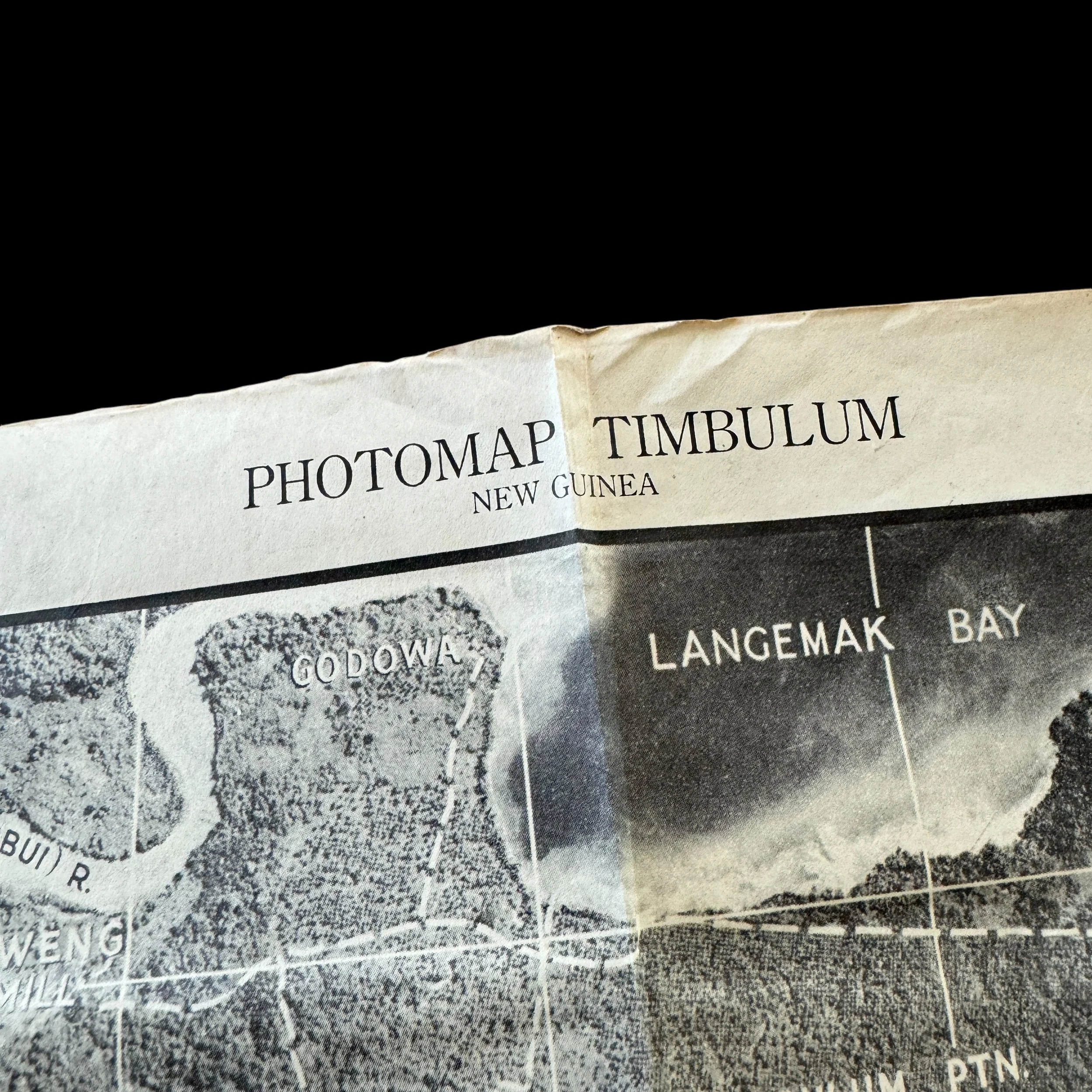











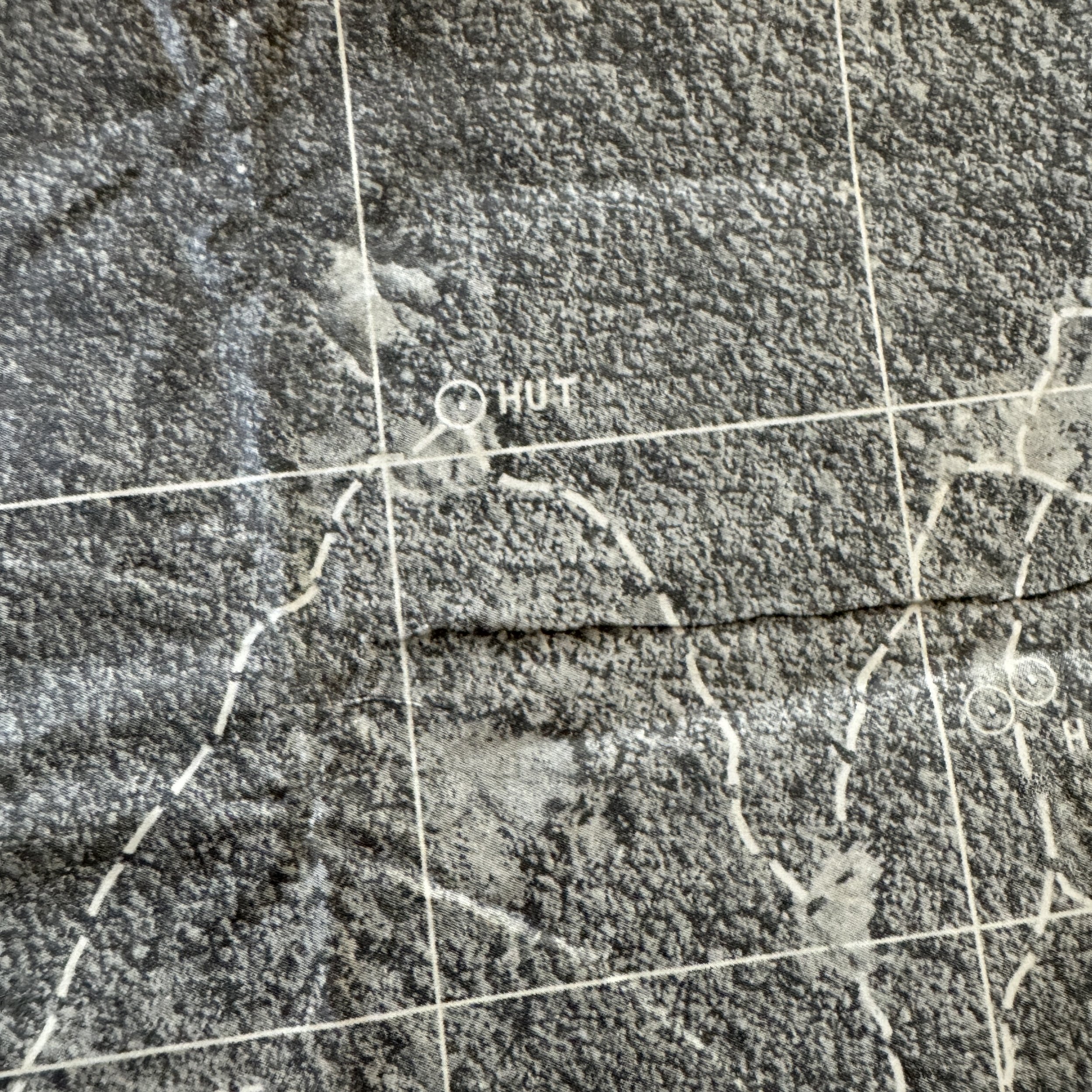
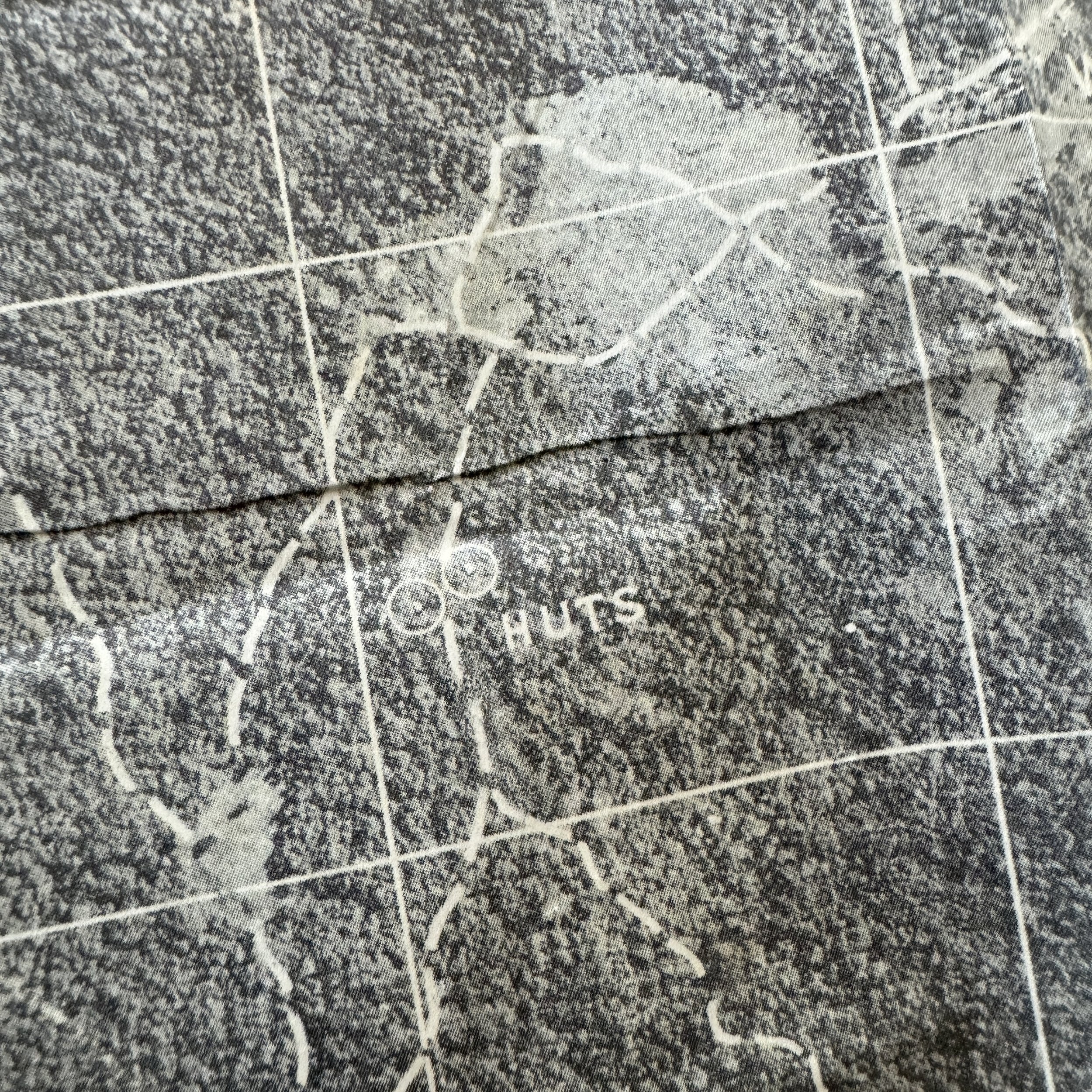





RARE! WWII 1943 New Guinea Campaign 8th Photo Reconnaissance Squadron (5th Air Force) Heavily Used Timbulum Combat Aerial Photo Map*
Comes with a hand-signed C.O.A.
*This New Guinea combat map is a part of a larger 8th Photo Recon Squadron bring-back collection of TYPE-ONE mission photographs (the same used to make these combat maps) as well as original Allied combat maps used during the New Guinea campaign.
Size: 19 × 25 inches
This extremely rare and museum-grade Pacific Theater WWII artifact is an original 1943 dated and heavily combat-used New Guinea photomap that was created using aerial photo reconnaissance mission photographs by the infamous 5th Air Force - 8th Photo Reconnaissance Squadron (Eight Ballers).
The 8th PRS, also known as the 8th Photo Reconnaissance Squadron, earned a renowned reputation for its exceptional service during campaigns across various regions including the East Indies, Japan, China, Papua, Guadalcanal, New Guinea, Northern Solomons, and Bismarck.
The 8th Photographic Reconnaissance Squadron (8th PRS) operated under the U.S. Army Air Force (USAAF), specifically part of the 5th Air Force and the 6th Photographic Reconnaissance Group (6th PRG). Referred to as the 8th Photographic Squadron, 8th Photo Recon Squadron, or 8th Photo Recon, the unit was initially outfitted with the F-4 Lightning, a specialized photographic reconnaissance variant of the P-38 Lightning. Camera equipment was installed in the nose section in lieu of traditional armaments. Conducting missions above Japanese-held territories and airfields, the squadron captured vital imagery utilized in the creation of aerial maps and target intelligence for subsequent combat operations. These reconnaissance flights were inherently perilous, with pilots often flying solitary missions through adverse weather conditions and challenging navigation circumstances. While over target areas, pilots maintained a steady flight path at lower altitudes to ensure high-quality photographic results, braving risks such as anti-aircraft artillery and potential interception by enemy planes. In later operations, F-4s received protective escort by armed P-38 Lightnings to enhance their defensive capabilities.
________________
Timbulum, New Guinea
Timbulum was a significant yet lesser-known locale during the New Guinea Campaign. The Allies recognized its value for resupply efforts, as its position offered relative proximity to forward lines. Due to the difficulty of air supply through the dense jungle, areas like Timbulum were critical for setting up advanced staging posts and supply lines. Japanese forces attempted to fortify positions around Timbulum to prevent Allied advances, and this led to several brutal confrontations, often involving hand-to-hand combat in thick jungle terrain. The Allies, capitalizing on Timbulum’s strategic potential, established pathways for artillery and supplies that would facilitate assaults on Japanese positions deeper inland. Controlling Timbulum allowed for a smoother movement of troops and supplies toward other contested regions, thereby aiding in the broader push across New Guinea.
Shneider Harbor
Shneider Harbor was a key naval asset due to its position along the coastline, providing both the Japanese and Allied forces with a potential staging ground for naval operations. Located near critical supply routes, the harbor was eyed as a gateway for the deployment of naval vessels and smaller craft for inland support. The Japanese initially used Shneider Harbor to bring in reinforcements, weaponry, and supplies from other territories, as it connected to several coastal regions under Japanese control. However, after the Allied forces recognized its strategic potential, they sought to disrupt Japanese operations and prevent reinforcements from reaching inland fortifications. American and Australian forces conducted bombing raids and naval blockades to neutralize Japanese shipping, severely impacting the enemy’s ability to maintain supply lines. As the Allies gained control of Shneider Harbor, they repurposed it as a logistics hub, enabling a continuous flow of resources into contested areas.
Kwalansam
Kwalansam’s role in the New Guinea Campaign was characterized by its unique geographical and tactical significance. The area’s dense forest provided natural cover, making it ideal for establishing concealed encampments and supply caches. For the Japanese forces, Kwalansam offered a fortified defensive position that allowed them to engage in guerrilla-style warfare, ambushing advancing Allied patrols. However, the Allies, using a combination of ground troops and aerial reconnaissance, gradually unraveled these hidden positions and launched concerted efforts to dislodge the Japanese. Through carefully coordinated infantry assaults and artillery support, the Allies managed to clear many of these fortifications, but at a high cost. The fighting around Kwalansam illustrated the grueling nature of jungle warfare, with soldiers combating not only the enemy but also the elements, including sweltering heat, disease-carrying insects, and rugged terrain. Securing Kwalansam allowed the Allies to open new routes for advancing into further Japanese-held territory and set up supply chains to sustain these efforts.
Langemak Bay
Langemak Bay became a focal point in the New Guinea Campaign as it served as a critical anchorage and base for Allied naval operations. Situated on the coast, the bay provided a relatively secure area for the Allies to anchor their ships, deploy troops, and manage logistics. During the early stages of the campaign, Japanese forces used the bay as a supply and transport hub, supporting their inland garrisons. As the Allied forces gained momentum and sought to cut off Japanese supply lines, capturing Langemak Bay became a priority. The bay’s strategic location allowed the Allies to launch amphibious assaults on nearby positions, using smaller craft to reach difficult or remote landing points. Additionally, Langemak Bay’s capture deprived the Japanese of a critical maritime asset, significantly disrupting their ability to resupply troops deeper in New Guinea. The Allies utilized the bay to stage further operations, enhancing their logistical support for inland advances and strengthening their position across the island.
________________
During World War II, combat photomaps were a vital tool for planning and executing military operations, particularly in challenging terrains like those found in the South Pacific, including New Guinea. Photomaps were created using aerial reconnaissance photographs combined with traditional cartographic techniques, providing highly accurate and detailed visual maps of terrain, structures, vegetation, and potential enemy positions. These maps were especially important in areas like New Guinea, where dense jungles, rugged mountains, and poorly charted territories made traditional navigation and planning extremely difficult.
The Strategic Importance of Photomaps in New Guinea
New Guinea was a key battleground in the Pacific Theater, as both Allied and Japanese forces sought control over the region due to its strategic proximity to Australia and critical supply routes. The dense jungle terrain and steep mountains made conventional maps inadequate, so photomaps became indispensable. These maps gave Allied forces a strategic advantage, as they could accurately pinpoint natural obstacles, river crossings, potential landing zones, and enemy fortifications—information that was crucial for planning ambushes, supply drops, and coordinated assaults.
In New Guinea, Allied forces needed to identify and navigate through uncharted jungle terrain, plan airstrikes, and locate Japanese supply lines and bases hidden in natural cover. Photomaps allowed military leaders to accurately identify these critical areas, providing vital intelligence for tactical planning. Allied forces used photomaps extensively in key operations, such as the capture of the Kokoda Track, the Buna-Gona campaign, and the Battle of Wau, where knowledge of terrain often determined the outcome of engagements.
The Creation and Use of Photomaps
Photomaps were produced by taking multiple high-resolution aerial photographs, often from reconnaissance planes flying at high altitudes. These photographs would then be stitched together to create a detailed composite of the area. The accuracy of photomaps depended heavily on the quality of the photographs and the skill of the cartographers who aligned them. In New Guinea, challenging weather conditions, such as tropical storms, heavy cloud cover, and mountainous terrain, complicated aerial photography, making photomap creation a demanding task that required patience and precision.
Once photomaps were created, they were distributed to field commanders, pilots, and ground troops. These maps allowed soldiers to plan their approach routes, identify enemy defenses, and navigate difficult terrain without the need for detailed topographic maps, which often weren’t available or were outdated. For example, in the Battle of Buna-Gona, photomaps enabled Allied forces to pinpoint Japanese bunkers, hidden artillery positions, and supply trails that would have been invisible in standard maps or field reports. This level of detail was critical in planning precise airstrikes and ground movements, which were essential in securing victory in such a complex environment.
Impact on Air and Ground Operations
Photomaps were especially useful in coordinating air and ground operations. The Royal Australian Air Force (RAAF) and the United States Army Air Forces (USAAF) used photomaps to identify bombing targets, enemy fortifications, and supply depots. Bombers could plan their approach routes and targeting patterns based on detailed topography provided by photomaps, reducing the risk of collateral damage and improving the success rate of airstrikes. During the Battle of Wau, for instance, photomaps allowed Allied pilots to navigate through dense cloud cover and steep mountain ranges to deliver much-needed supplies and reinforcements to Allied forces engaged in battle.
For ground forces, photomaps were invaluable in planning amphibious landings and troop movements across challenging terrain. Troops could avoid natural barriers such as swamps, cliffs, and rivers, and identify more accessible routes through dense jungle areas. This knowledge allowed for more efficient movement and positioning of forces, helping troops to maintain the element of surprise in their engagements with Japanese forces.
In amphibious operations, such as those around Lae and Salamaua, photomaps helped commanders choose landing sites that offered cover and proximity to key objectives. The maps provided enough detail to allow for effective coordination between infantry, artillery, and air support units, maximizing the efficiency of Allied assaults on Japanese-held positions.
Legacy and Influence
The use of photomaps in New Guinea marked a turning point in military cartography, establishing photoreconnaissance as a critical component of modern warfare. These maps set a new standard for military intelligence and planning, showcasing the potential of aerial reconnaissance to provide real-time data and highly accurate visual information. The success of photomap-based operations in New Guinea helped influence the development of satellite imagery and geospatial intelligence systems used in modern military and civilian applications.